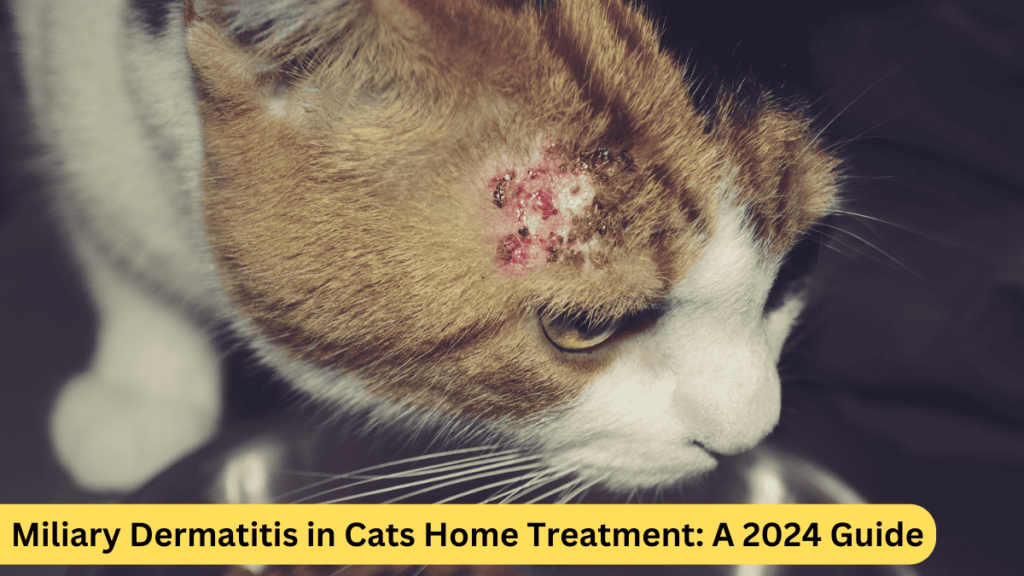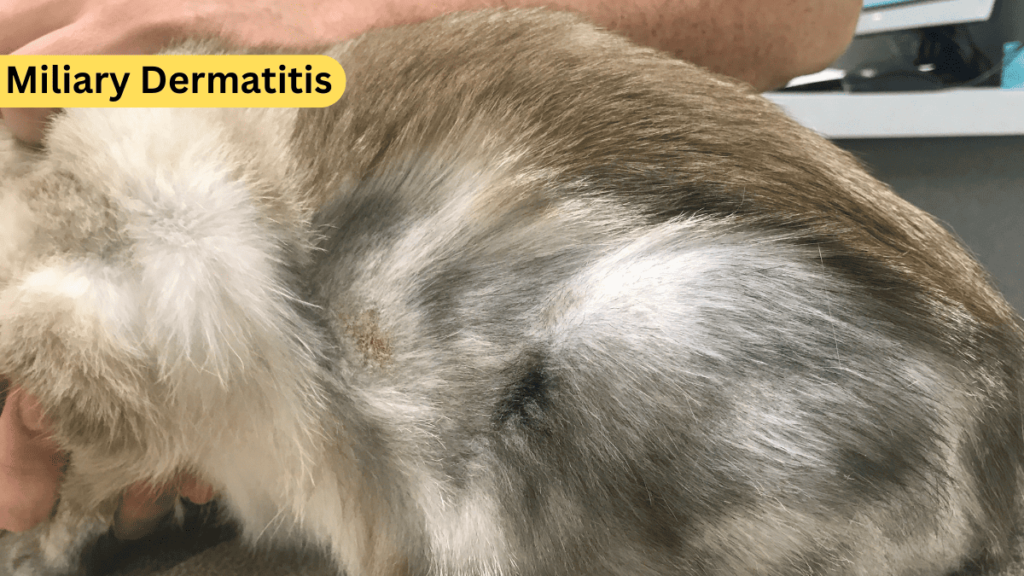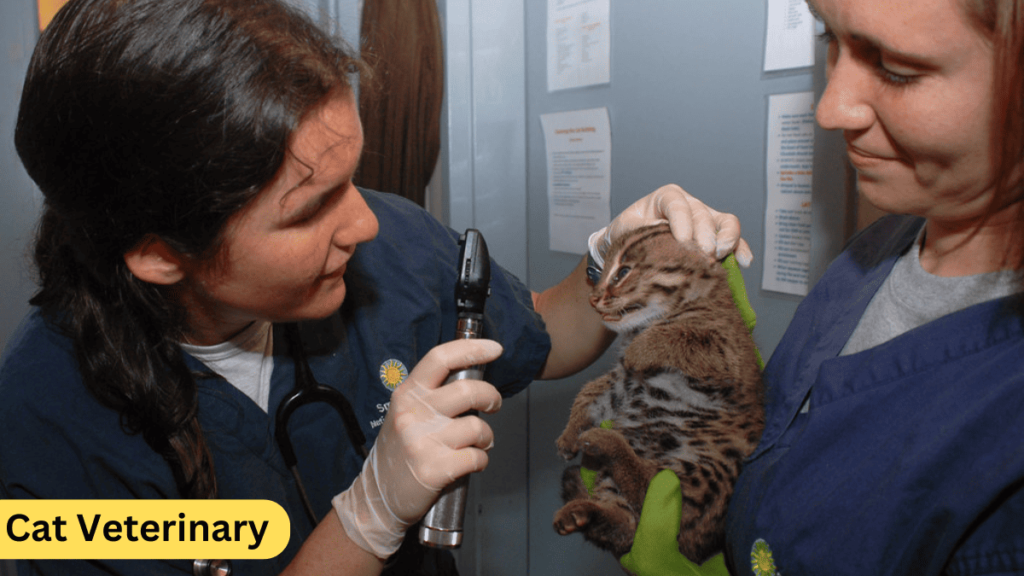
Miliary dermatitis is a common yet troublesome skin condition in cats that can cause discomfort and frustration for both felines and their owners. While it often requires professional veterinary care, there are effective home treatments that can ease symptoms and provide relief. This 2024 guide will explain everything you need to know about miliary dermatitis in cats home treatment, its causes, and symptoms that can help your furry companion.
Table of Contents
What is Miliary Dermatitis in Cats?
Miliary dermatitis in cats is a condition characterized by small, crusty lesions that resemble millet seeds. These lesions often appear as an allergic reaction, most commonly to flea bites but also to food, environmental allergens, or even certain infections.
The condition gets its name from the Latin word “milium,” meaning millet, due to the appearance of the small, grain-like bumps on the cat’s skin. These lesions are often easier to feel than to see, especially in the early stages.
Symptoms of Miliary Dermatitis in Cats

Cats affected by miliary dermatitis exhibit several key symptoms. These include:
- Itchy skin: The cat will frequently scratch, lick, or bite at the affected areas.
- Lesions: Small, scabby bumps form on the skin, especially around the neck, back, and tail.
- Thinning fur: Over time, the fur around the lesions may thin due to excessive grooming.
- Scabs: Cats often develop small scabs from scratching or biting their irritated skin.
In severe cases, the affected areas can become infected, leading to pimple-like sores or pustules.
Common Causes of Miliary Dermatitis
Understanding the cause of miliary dermatitis is essential for effective treatment. The most common triggers include:
- Flea Allergy Dermatitis: Fleas are the leading cause of miliary dermatitis. Cats are extremely sensitive to flea saliva, and even one flea bite can provoke a severe allergic reaction.
- Food Allergies: Cats can develop allergies to certain ingredients in their food, leading to skin reactions.
- Environmental Allergies: Common allergens like pollen, mold, or dust can trigger miliary dermatitis in sensitive cats.
- Parasites: Mites and lice, although rare in indoor cats, can also cause the condition.
- Autoimmune Diseases: In rarer cases, autoimmune disorders such as lupus or pemphigus may result in miliary dermatitis.
Home Treatments for Miliary Dermatitis in Cats
Before opting for professional medical intervention, several home remedies can help alleviate your cat’s discomfort. Here’s a guide to some of the most effective miliary dermatitis home treatments:
1. Coconut Oil
Coconut oil is a natural remedy that can soothe your cat’s itchy skin. It has antibacterial and anti-inflammatory properties that promote healing.
- How to use: Apply a small amount of coconut oil to the affected areas once a day. Ensure your cat doesn’t ingest too much, as this can lead to digestive issues.
2. Essential Fatty Acids (Fish Oil)
Omega-3 fatty acids found in fish oil can reduce inflammation and support healthy skin.
- How to use: Add a high-quality fish oil supplement to your cat’s diet. You can also offer fish like mackerel or sardines to increase their intake of Omega-3s.
3. Aloe Vera Gel
Aloe vera can soothe inflamed skin. However, it’s important to use the gel cautiously, as aloe can be toxic if ingested by cats.
- How to use: Apply aloe vera gel directly to the irritated areas, but make sure to supervise your cat to prevent them from licking it off.
4. Colloidal Oatmeal
Oatmeal has soothing properties that can help relieve itchy skin.
- How to use: Make a dry oatmeal shampoo by blending oats into a fine powder and rubbing it onto your cat’s fur. This can help alleviate itching without the need for a bath.
5. Flea Prevention
Since flea bites are the most common cause of miliary dermatitis, eliminating fleas is crucial. Opt for high-quality flea preventatives available online or from your veterinarian.
- Flea Treatments: Consider using products like Revolution, Frontline, or Advantage to keep fleas at bay.
6. Epsom Salt Baths
Epsom salts can help reduce inflammation, though bathing a cat is often challenging.
- How to use: Dissolve Epsom salts in warm water and gently sponge bathe the affected areas.
7. Antihistamines
Over-the-counter antihistamines like Benadryl can be used to reduce itching, but it’s essential to consult a veterinarian before administering these medications to your cat.
Read More:
Natural Worm Treatment for Cats: A 2024 Guide
Home Remedies for Cat Scabs: A Quick Table
| Home Remedy | How It Works | How to Use |
|---|---|---|
| Coconut Oil | Soothes skin, reduces inflammation | Apply a small amount to scabs daily |
| Fish Oil (Omega-3) | Reduces inflammation, supports skin health | Add to diet or feed fatty fish |
| Aloe Vera | Soothes irritated skin | Apply gel to lesions (supervise cat) |
| Colloidal Oatmeal | Relieves itching, dry skin | Rub blended oats onto fur |
| Flea Treatment | Prevents flea bites that trigger allergic reactions | Use a flea preventative like Revolution or Frontline |
| Epsom Salt | Reduces inflammation | Sponge bath affected areas |
| Antihistamines | Relieves itching | Administer under vet guidance |
What to Avoid in Home Treatments
- Cortisone Cream: Avoid using cortisone cream on cats, as they may lick it off and experience digestive issues like diarrhea.
- Overuse of Aloe Vera: While aloe vera gel can soothe the skin, it’s toxic if ingested, so only use it when you can monitor your cat.
- Ignoring Flea Control: Even if fleas aren’t visible, using a reliable flea prevention method is crucial for avoiding a recurrence of miliary dermatitis.
When to See a Vet

If the above home treatments do not provide relief within a few weeks, it may be time to consult a veterinarian. Professional help is also necessary if you notice:
- Infection: Pustules or pimple-like sores on your cat’s skin indicate infection.
- Persistent Itching: If your cat is still scratching excessively, further investigation is required.
- Unexplained Symptoms: If your cat develops symptoms beyond skin irritation, such as lethargy, vomiting, or weight loss, seek veterinary advice.
Frequently Asked Questions (FAQs)
Q1: Can I use dog flea treatments on my cat?
No, never use flea treatments designed for dogs on cats. Some ingredients can be toxic to cats.
Q2: How long does it take for miliary dermatitis to heal?
If treated early and properly, miliary dermatitis may begin to improve within a few days, though complete healing can take weeks.
Q3: Is miliary dermatitis contagious?
No, miliary dermatitis itself is not contagious. However, underlying causes like fleas or mites can spread to other pets.
Conclusion
Miliary dermatitis in cats can be uncomfortable, but with proper care and attention, you can manage your cat’s symptoms at home. Focus on treating the underlying cause, whether it’s fleas, diet, or allergies, and use safe, natural remedies like coconut oil and fish oil to soothe irritated skin. With these steps, your feline friend should be back to their happy, healthy self in no time.
By following this comprehensive 2024 home treatment guide, you’ll not only provide relief for your cat but also contribute to a healthier, happier environment for them.
